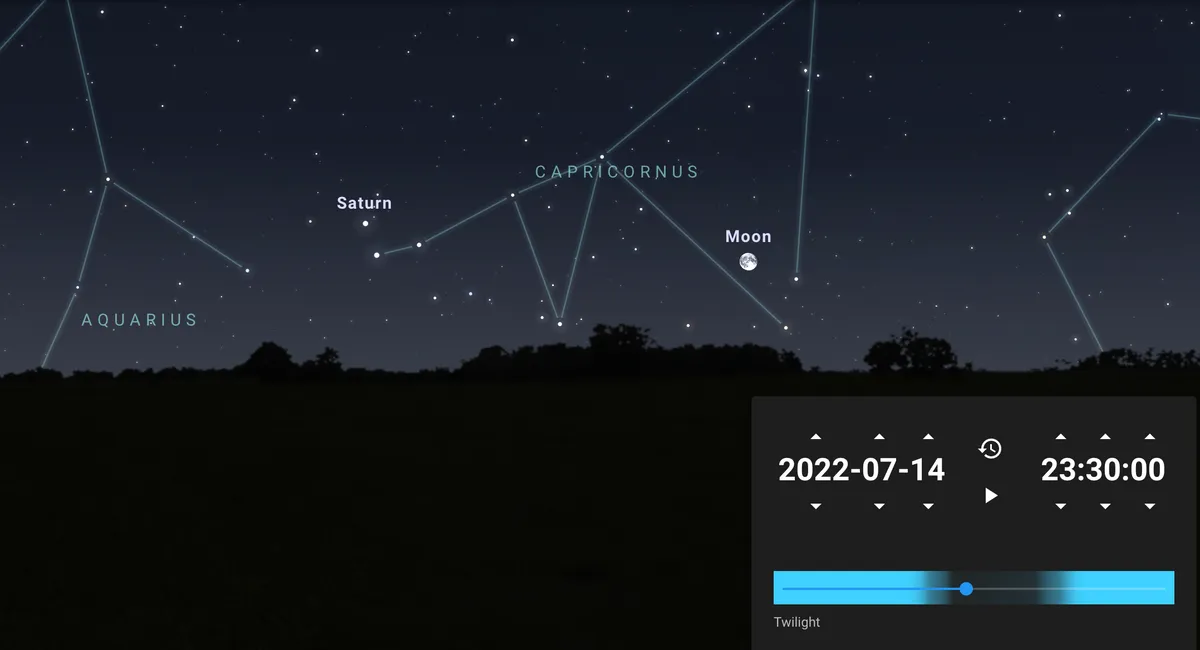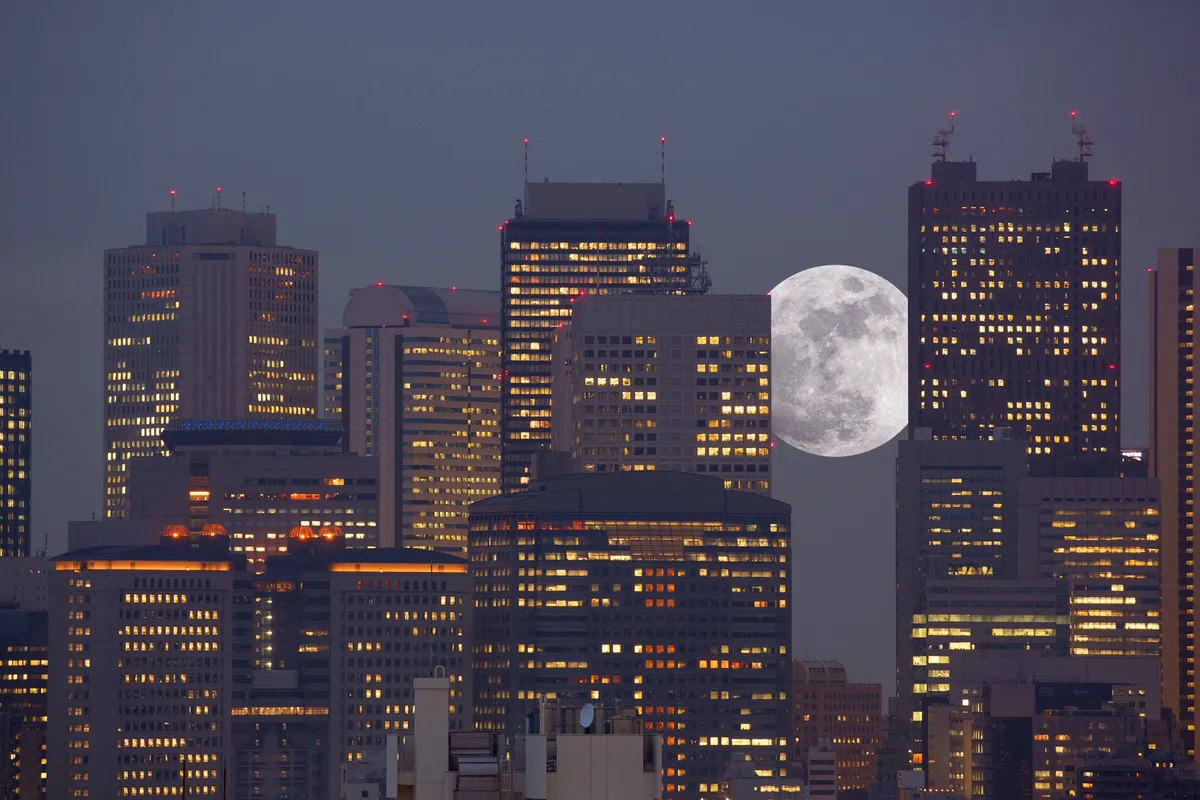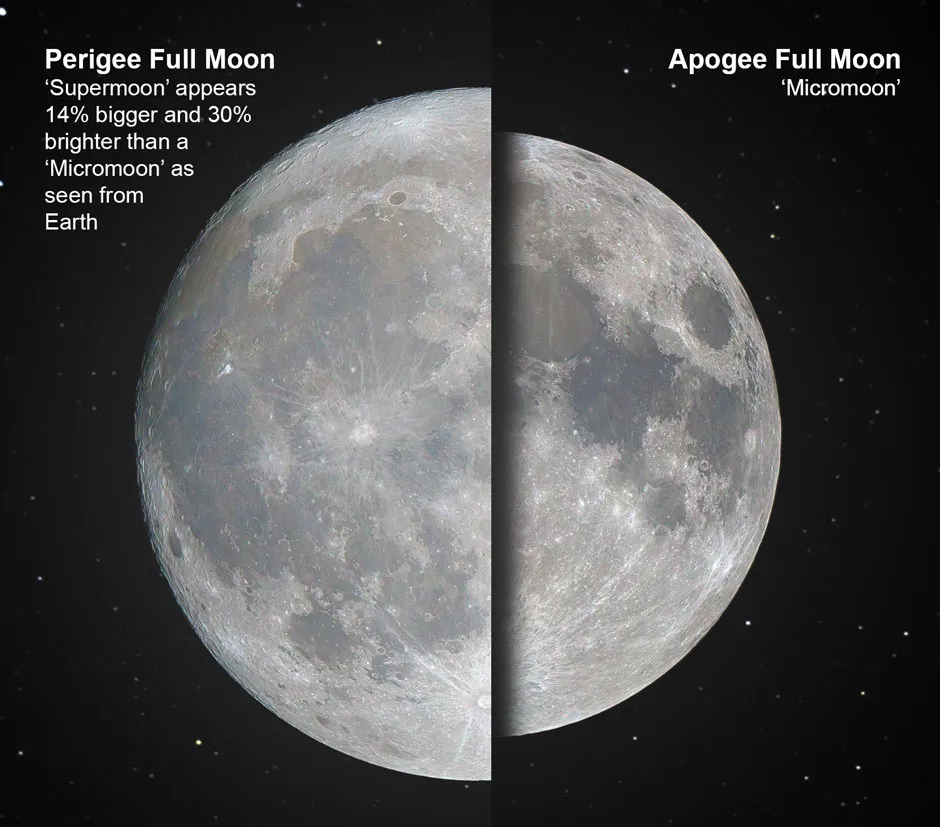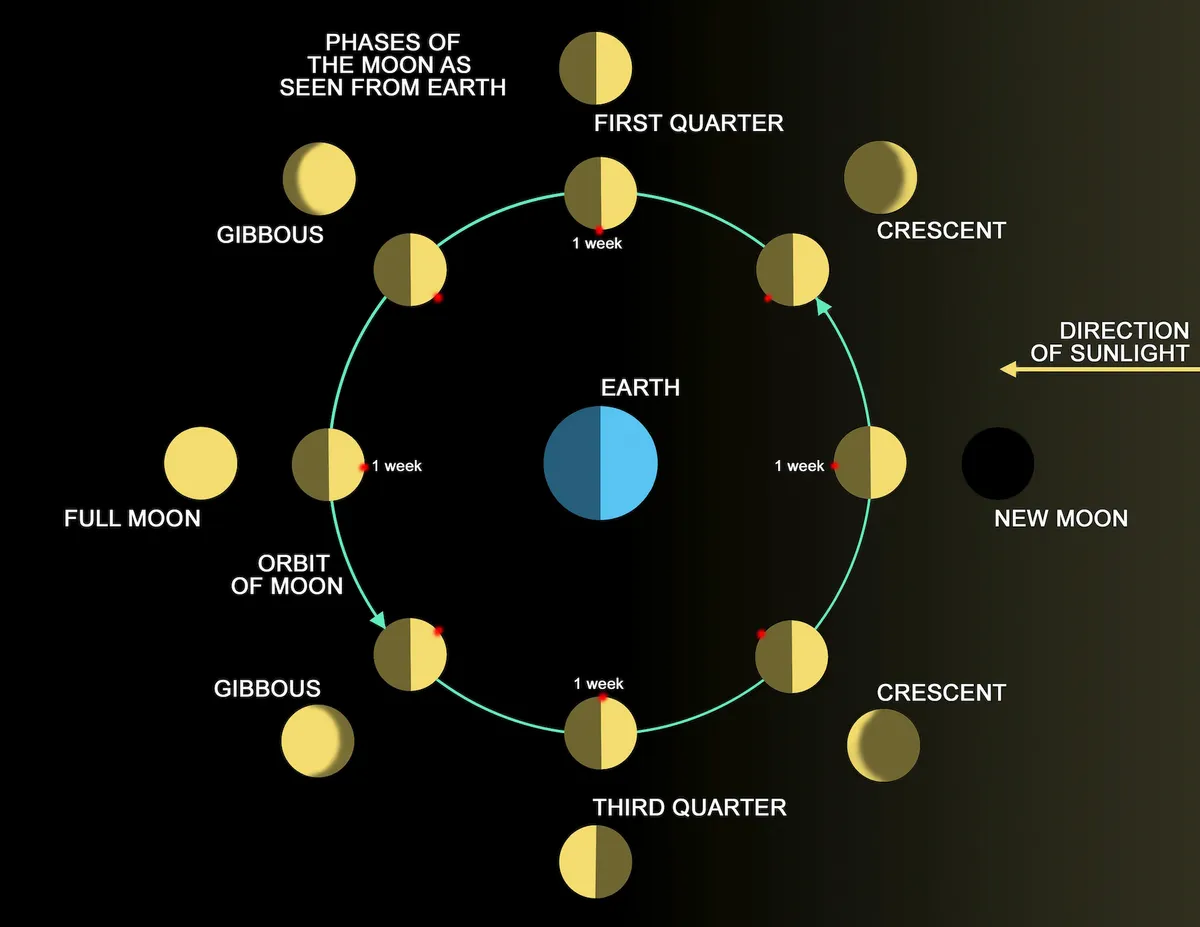Even with fewer hours of darkness, there is still a treasure trove of celestial goodies waiting for those who are able to cast their eyes to the sky. Noctilucent clouds have recently been spotted around the UK, and this rare phenomenon (although they are becoming more common) may delight for another month or so during clear, summer nights.
At around midnight, the Summer Triangle is shining directly overhead, with the blueish-white star Vega in the constellation Lyra shining brightest in the night sky. There also are a number of meteor showers to look forward to, including the Perseids later in the month.
July welcomes the second supermoon of the year, but when exactly can you see the Buck Moon? Which constellation will it appear in? And what's the best time to view it? Answers to these questions, and more, are below.
Missed the full Moon yesterday? Not to worry, we've put together this gallery of the best Buck Supermoon pictures.
If you're hoping to snap a few pictures yourself, check out another of our fantastic galleries, this time of the best Wolf Moon pictures, the first full Moon of 2022, for inspiration.
If you’re enjoying the warm weather and clear nights, why not plan ahead with our full Moon UK calendar and astronomy for beginners guide?
When can I see the Buck Moon 2022?
The Buck Moon was full yesterday Wednesday 13 July 2022, but will still appear full tonight Thursday 14 July in the UK and around the world.
Three days ago, on Monday 11 July, the Moon passed 3° north of Antares, the brightest star in the zodiac constellation Scorpius. Tomorrow, Friday 15 July, the Moon will pass 4.1° south of Saturn, which is currently nestled in the constellation Capricornus.
Clouds were patchy yesterday, giving the supermoon a somewhat ethereal glow. Conditions are looking a little clearer for tonight, at least for now, so it's worth looking up a little after moonrise.
For those who missed it, you can check out our gallery of the best Strawberry supermoon photos from last year.
What is the best time to see the Buck Moon?
The Buck Moon this year reached peak illumination at 6:38pm in the early evening of Wednesday 13 July. As this was still during daylight hours, and before the Moon had risen from our point of view in the UK, the ideal time to see the Buck Moon would have been in the evening of 13 July, just after moonrise at 9:47pm, while the Moon is still low on the horizon.
However, typical British weather prevailed and clouds were patchy.
But not to worry! July's buck supermoon will still appear full tonight, Thursday 14 July.
If you can, get outside from around 11pm to 11:30pm, on Thursday 14 July, and enjoy a spot of moongazing in the warm summer evening. If there are buildings, foliage or other obstructions near the horizon where you are, then wait a little longer for the Moon to rise higher in the sky, until around midnight.

The Moon will rise in the southeast at 10:28pm on the 14 July, and with clear skies we should be in for a rather lovely supermoon as the Moon illusion will also be in play, making it appear bigger and brighter.
The Buck Moon reached its perigee, its closest point to the Earth, at 9:06am yesterday morning, but we weren't able see the Moon at perigee as it was still below the horizon at that point. At its closest approach in this lunar cycle, the Moon will pass a mere 357,272km away from Earth.
Here in Bristol, tonight's conditions are looking partly cloudy but with clear intervals, so fingers crossed the clouds will part long enough to provide a glimpse of our nearest celestial neighbour.
What is the Moon illusion?
The Moon illusion is when the Moon appears bigger during moonrise and moonset, when it’s still low on the horizon. Unfortunately, it’s only our human eyes playing tricks, but it’s great if you want to catch a few snaps of the Moon. Scientists are still unsure as to why this occurs, but it’s possible that our brain compares the Moon with distant objects on the horizon (such as buildings or wind turbines), which fools us into thinking it’s much larger.

Why is it called the Buck Moon?
Most species of male deer (bucks) shed and regrow their antlers every year. They shed their antlers in the early spring (or late winter), which then regrow and continue to develop during the summer months. As they grow, the antlers are protected by a thin, velvety layer which hardens, dries and falls away once they’re fully grown. This is why bucks’ antlers often look ‘tatty’ in the summer.
By July, it’s usual to see bucks with full-size antlers in preparation for the autumn breeding season. They’ll need to be in top fettle to compete with other bucks for the best females.
As such, the Algonquin tribe named it the Buck Moon.
Other names for the July full Moon include the Berry Moon, Raspberry Moon and Thunder Moon.
Is the Buck Moon 2022 a supermoon?
Yes, July's full Moon, the Buck Moon in 2022 is a supermoon, and the second supermoon of the year.
Supermoons are categorised when the Moon is at 360,000km (or less) away from Earth in its orbital path, and we'll often see two or three full supermoons in a row. The June full Moon, the Strawberry Moon and the August full Moon, the Sturgeon Moon, are both supermoons.
What causes a supermoon?
A supermoon is around 7 per cent larger and 15 per cent brighter than a standard full Moon, or 14 per cent bigger and 30 per cent brighter than a micromoon. This effect is amplified further when the Moon is on the horizon, like it is this month, thanks to the Moon illusion.
A supermoon occurs when the Moon, which orbits the Earth in an elliptical (oval) orbit, is at its closest point to Earth along this orbital path. This point is called the perigee. When the Moon reaches perigee at the same time as a full Moon, we get a supermoon and the Moon appears larger in the sky.
Conversely, when a full Moon is at its furthest distance in its orbital path around the Earth (called the apogee), the Moon appears smaller. Rather aptly, this is termed a micromoon.

How often do full Moons occur?
Full Moons occur every 29 days, 12 hours, 44 minutes, and 3 seconds, usually rounded to 29.53 days. This is calculated by the time it takes the Moon to orbit the Earth once and complete one lunar phase cycle, as measured from new Moon to new Moon. This is also known as one synodic month.
We usually have 12 full Moons in a calendar year, occurring when the Moon is fully illuminated by the Sun. This happens when the Earth is located directly between the Sun and the Moon.

However, because the lunar cycle takes a little under one calendar month, we sometimes get 13 full Moons in a year. This occurs around every two to three years. This means that will get two full Moons in a single month, and this extra full Moon is known as a ‘blue Moon’.
The next blue Moon will occur in August 2023, next year. Similarly, we sometimes get two new Moons in a month, and this extra new Moon is known as a Black Moon.
Read more about the Moon: